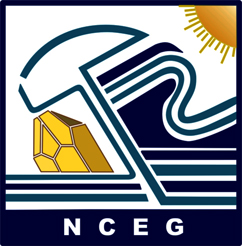October 08, 2005 rupture along the Jhelum Thrust and post earthquake scenario along Jhelum Fault
Syed Kazim Mehdi
Seismology Division, WAPDA, Tarbela Dam Project, Tarbela, Pakistan
Email: sspkazim@hotmail.com
A powerful shallow focus earthquake of Mw 7.7 devastated the Kashmir-Hazara Region (KHR) on October 08, 2005, killing over 0.8 million people and resulting in infrastructures damages whose rehabilitation will cost over five billion dollars. The earthquake ruptured the southwest Jhelum Thrust (JT) (also known as Tanda Muzaffarabad fault), which was inferred to be as active, in a region where the river incises directly into the Murree sandstones on the west side of the valley (footwall of Jhelum Thrust), while it has abandoned large inset terraces along the east side (hanging wall of Jhelum Thrust). Following the occurrence of this earthquake, a large amount of new geophysical and geological information is now available, providing key new insights into the regional geotectonic framework and origin of the Hazara-Kashmir Syntaxis (HKS). The Jhelum Thrust is a recent offshoot of the Pir-Panjal Thrust, which jumped southwards by about 20 km, perhaps in the last five million years. The fault plane solution implies predominant thrusting towards the southwest, with a slight component of right-lateral slip. The surface rupture of the Kashmir-Hazara earthquake probably ranks as the most spectacular rupture documented to date along the entire Himalayan range.
The occurrence of Kashmir-Hazara earthquake confirms that the active Jhelum Thrust (JT) and Jhelum Fault (JF), in a region located well north of the Main Himalayan Frontal Thrust, accommodate roughly EW-oriented, present day shortening related to “zipper tectonics” within the part of the HKS. Such EW shortening is a consequence of slip-partitioning at a much greater scale, co-involving the Chaman Fault to the west and Karakoram fault to the northeast. Many of the unexplained aftershocks with different focal mechanisms reflect the shift of stresses towards the other active faults. One such shift is evident along the Jhelum Fault which extends southwards from Muzaffarabad in a north-south direction, before veering west towards Islamabad, going further down to Mangla and ending into the Salt Range. The stresses indicate that another big earthquake might occur with a location propagating southwards on the Jhelum Fault. Detailed seismic studies of the areas covering the Jhelum Fault, where big engineering structures have been planned for the near future and installation of seismic instruments are highly recommended. |

